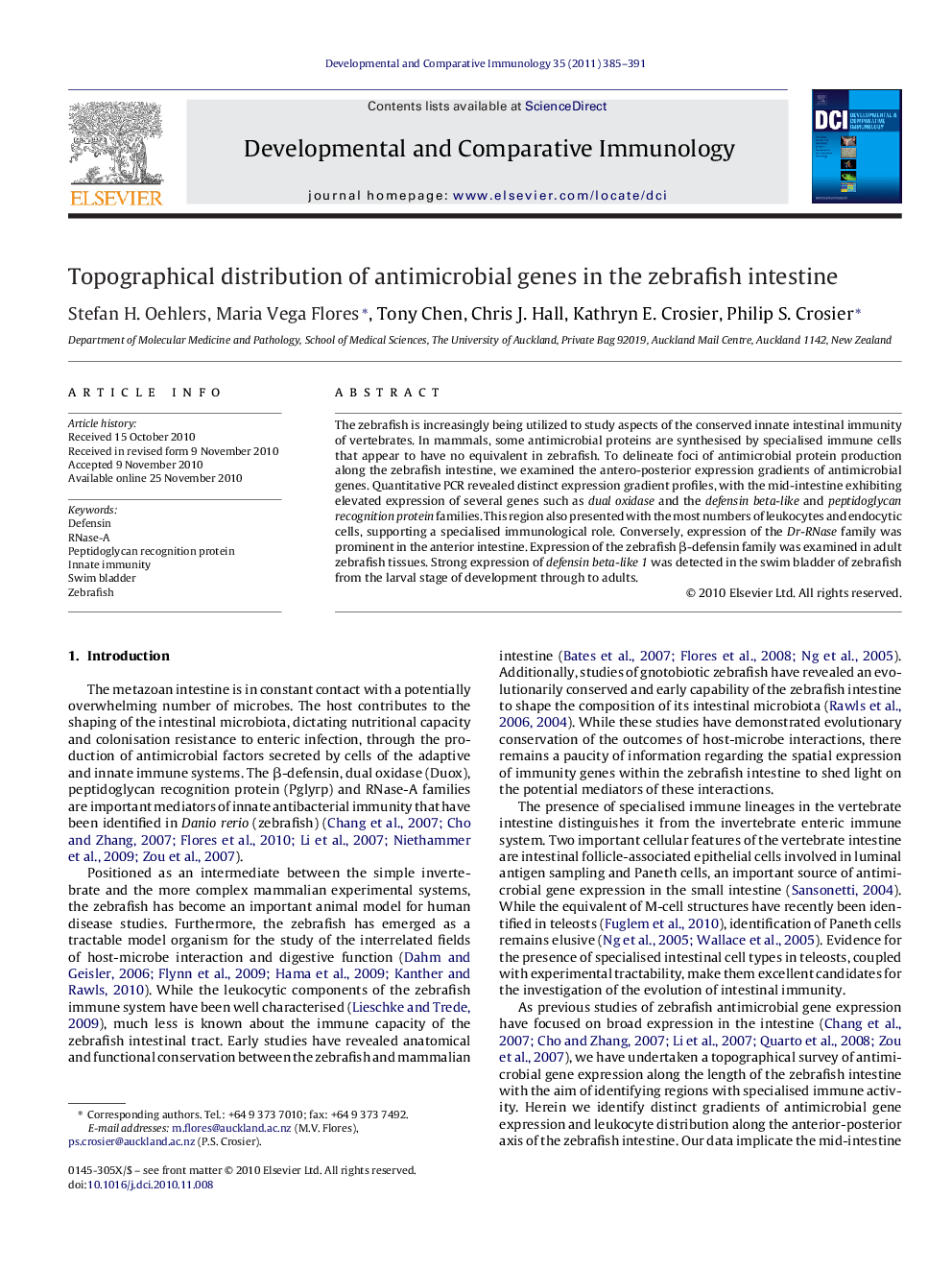| Article ID | Journal | Published Year | Pages | File Type |
|---|---|---|---|---|
| 10971674 | Developmental & Comparative Immunology | 2011 | 7 Pages |
Abstract
The zebrafish is increasingly being utilized to study aspects of the conserved innate intestinal immunity of vertebrates. In mammals, some antimicrobial proteins are synthesised by specialised immune cells that appear to have no equivalent in zebrafish. To delineate foci of antimicrobial protein production along the zebrafish intestine, we examined the antero-posterior expression gradients of antimicrobial genes. Quantitative PCR revealed distinct expression gradient profiles, with the mid-intestine exhibiting elevated expression of several genes such as dual oxidase and the defensin beta-like and peptidoglycan recognition protein families. This region also presented with the most numbers of leukocytes and endocytic cells, supporting a specialised immunological role. Conversely, expression of the Dr-RNase family was prominent in the anterior intestine. Expression of the zebrafish β-defensin family was examined in adult zebrafish tissues. Strong expression of defensin beta-like 1 was detected in the swim bladder of zebrafish from the larval stage of development through to adults.
Related Topics
Life Sciences
Biochemistry, Genetics and Molecular Biology
Developmental Biology
Authors
Stefan H. Oehlers, Maria Vega Flores, Tony Chen, Chris J. Hall, Kathryn E. Crosier, Philip S. Crosier,
